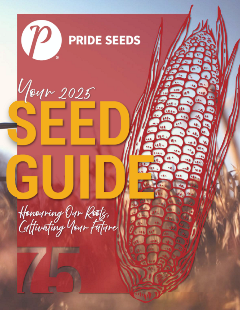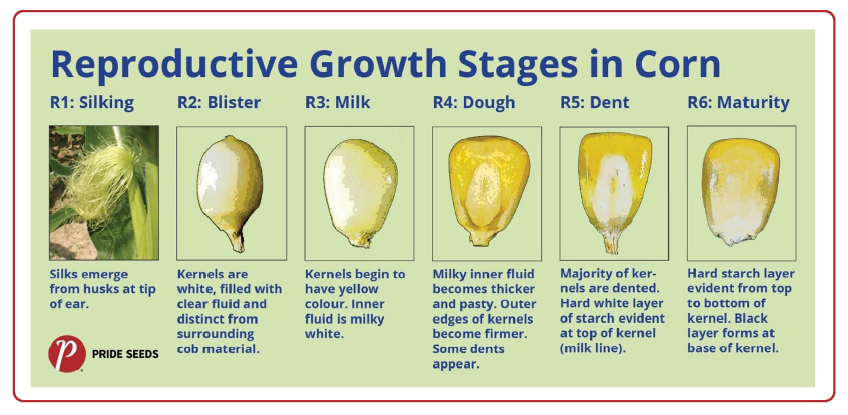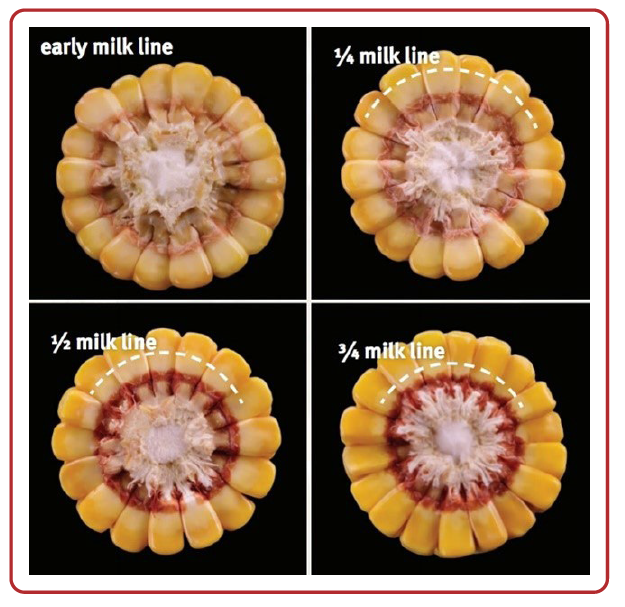WELCOME JEREMY O'SHEA TO PRIDE SEEDS

Enhance your knowledge and stay ahead with PRIDE SEEDS Corn and Soybean School videos.
Browse our selection of products below
___________________________________________________________________________________________________________________________________________

2024-2025 PRIDE Seeds Product GuideYou can find all of our products on the website, including supporting performance data and create your own personalized guide called My Guide. You can also download the digital version of our printed product guide which includes product comparison charts. |
SHOP THE PRIDE SEEDS E-STORE
-7.png?sfvrsn=87920db3_3)
STAY UP-TO-DATE WITH PRIDE SEEDS LATEST BLOGS, NEWS AND ARTICLES
The Results of Late Season Frost
It has been great to see the combines rolling after a challenging start to the season in the eastern part of Western Canada, where crops were planted late, ultimately delaying harvest. Temperatures have also been dipping below 0°C at night, indicating that frost may have affected the later seeded or later season (corn & soybean) crops.
CORN IS ONE OF THOSE LATE SEASON CROPS, SO WHAT SHOULD WE EXPECT IF IT RECEIVED FROST BEFORE IT WAS PHYSIOLOGICALLY MATURE?
First off, we need to understand how hard of a frost our corn received. There will be a large difference between a “simple frost” that just damages or kills some of the leaves vs. a “killing frost” that completely stops the photosynthesis of the plant. A simple frost can occur when temperatures are around 0°C with optimum conditions for heat loss from leaves (clear skies, low humidity, no wind, etc.). Losses will be less during a simple frost because the surviving stalk can remobilize carbohydrates from stalk tissue to the developing ear, even if the leaves are dead.
A killing frost occurs when temperatures are near 0°C for a few hours or when temperatures are -2°C for just a few minutes. Following a killing frost, photosynthesis and metabolic activities will completely stop, resulting in no further dry matter accumulation. This in turn, affects the yield and quality of the corn crop.

Next, we need to determine what growth stage the corn was at during the frost. Simply, the further developed the corn is, the less potential damage results. Once it reaches R6 (black layer), the milk line will be gone, and all kernels will have reached maximum dry matter. Meaning grain yield and test weight is safe from any frost.

Frost can affect grain quality as well as yield, more severe impacts on grain quality will occur at mid- dough (R4.5), while less negative impact occurs the closer the plant gets to dent stage (R5). By the time the kernel reaches ½ milk line there will only be relatively minor impacts on quality.

WHAT TO LOOK FOR?
If you think that you had frost overnight, do not panic and run out to check fields. Symptoms of frost damage will only start to show up about 1 to 2 days after a frost. It is recommended to wait 5 – 7 days before assessing your crop. The symptoms to look for are water-soaked leaves that eventually turn brown.
Please continue to stay safe this harvest season!
TAKE PRIDE IN YOUR INBOX
Expert advice, news and information
THE PRIDE SEEDS ADVANTAGE
Farming is one of the most demanding industries in the world, subject to a variety of factors such as time, weather, and global pressures. You know this every time you look out the window and think about the field in front of you. Growers and dealers deserve an advantage: The PRIDE Seed Advantage.
LEARN MORETHE PRIDE SEEDS ADVANTAGE
Every year PRIDE Seeds works hard to produce leading-edge products that enable success where it matters most, on your farm. Our dedicated team strives to provide sales expertise, agronomy support, quality production, and service tailored to meet your needs.
LEARN MORE

Leave a commentOrder by
Newest on top Oldest on top